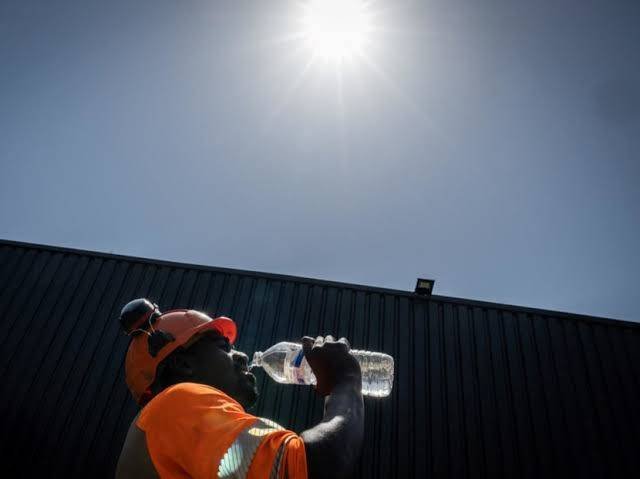Record-Breaking Forecast: 2023-2027 Poised to Become Hottest Five-Year Period
Get ready for scorching summers and rising global temperatures as the United Nations issues a dire warning that the period from 2023 to 2027 is likely to be the hottest five-year stretch ever recorded. The World Meteorological Organization (WMO) predicts a two-thirds chance that at least one of these years will surpass the ambitious targets set in the Paris Climate Agreement. As greenhouse gas emissions and the intensification of El Nino come together, our planet is poised to enter uncharted territory.
The previous eight years have already etched their names in the record books as the hottest on record, with 2016 claiming the top spot. However, as climate change gains momentum, temperatures are expected to skyrocket even further. The WMO confidently declares a 98-percent likelihood that one of the next five years, or possibly the entire five-year span, will shatter existing temperature records.
The Paris Agreement, established in 2015, aimed to restrict global warming to well below 2 degrees Celsius above pre-industrial levels, with a more ambitious goal of limiting it to 1.5 degrees Celsius if feasible. Alarming data reveals that in 2022, the global mean temperature was already 1.15 degrees Celsius higher than the average measured between 1850 and 1900. The WMO’s latest assessment indicates a 66 percent chance that annual global surface temperatures will exceed the 1.5-degree threshold for at least one year between 2023 and 2027, with a projected range of 1.1 to 1.8 degrees Celsius for each of these years.

El Nino and Climate Change Collide: A Recipe for Soaring Temperatures
Chief of the WMO, Petteri Taalas, emphasizes the urgency of the situation, stating, “WMO is sounding the alarm that we will breach the 1.5-degree level on a temporary basis with increasing frequency.” A warming El Nino event, anticipated in the coming months, will collaborate with human-induced climate change to push temperatures into unprecedented territory. Taalas warns of far-reaching consequences for human health, food security, water resources, and the environment, urging global preparedness for the impending challenges.
El Nino, a significant warming of surface temperatures in the Pacific Ocean, occurs every two to seven years. Traditionally, it leads to increased global temperatures in the subsequent year. Should this pattern hold, 2024 would witness an additional surge in temperatures. Taalas stresses that the data released on Wednesday illustrates an unfortunate truth: efforts to limit global warming have fallen short, and we continue to move in the wrong direction. Halting the negative trend and preventing further escalation may not be achievable until the 2060s.
The culprit behind trapping heat in our atmosphere is the accumulation of greenhouse gases, which have reached unprecedented levels. Carbon dioxide, methane, and nitrous oxide are the primary greenhouse gases contributing to the ongoing crisis. Taalas warns that returning to normal levels may take thousands of years due to the high concentration of carbon dioxide and the irreversible loss of glaciers and rising sea levels. The climate patterns of the past century are forever altered.
Impacts on Health, Food Security, and Environment: Urgent Need for Global Preparedness
The impact of rising temperatures spares no one. Land and sea surface temperatures have steadily increased since the 1960s, and the probability of exceeding the 1.5-degree mark above pre-industrial averages has been on the rise since 2015. Leon Hermanson of the Met Office, the WMO’s leading center for yearly to 10-yearly climate predictions, acknowledges the sobering reality but emphasizes the importance of not giving up. Urging reduced greenhouse gas emissions, he highlights that every effort made to curb emissions will mitigate the severity of the associated extreme events, such as floods, droughts, and mass migrations.
While climate average predictions remain relatively strong, predictions for climate extremes still contain uncertainties.











